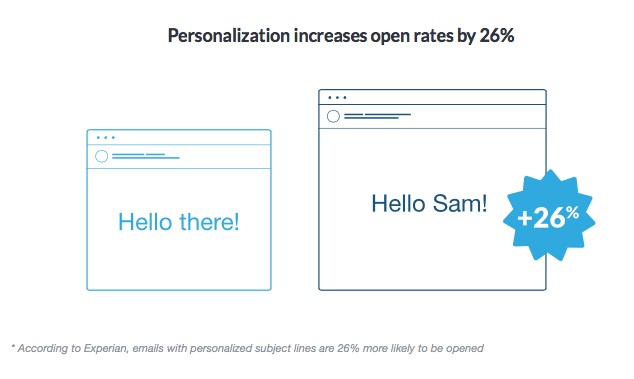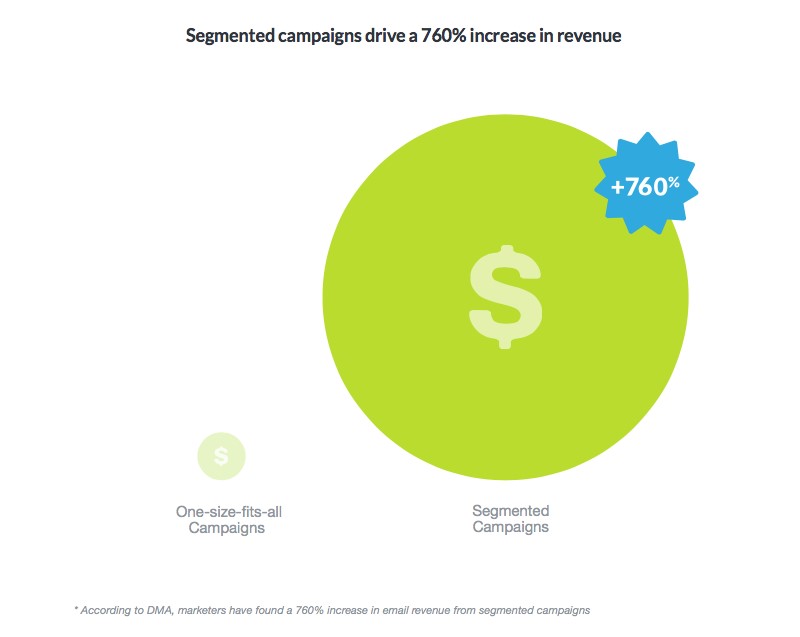Most SMBs know that email marketing is an important part of connecting with customers and promoting services. In order to get the most out of your email marketing, you have to make sure you’re following best practices and working to make improvements.
Sending an email at the right time and using the right words in the subject line and throughout the content can make a big difference. Including information in an email that makes the reader want to open it and read it is key, and the easiest way is to make the content personal to each reader.
Here we cover 4 email marketing tips that make each email special to every reader and encourages opens and reading.
1. Personalize your email messages
To help make your email marketing more effective and drive more business, use personalization. There are a variety of ways to add personalization to your emails, the easiest one is to add your reader’s name to the subject line. This brings attention to the subject line and can help get your email opened. In fact, subject lines that are personalized have a 26% increase in opens. And with your readers opening your email more often, the more opportunity you have to convert them.
There are other ways to personalize an email besides adding a name to the subject line. Within the text of the emai,l you can add any information you have about your reader which can help tailor the content to what they’re interested in. Try adding something that could help a reader convert, such as a t-shirt size, weather in their local area, or short birthday wishes. If they’ve already converted, include a recent purchase or a product or service that corresponds to their purchase.
You could see an increase of 20% in sales by using personalization, don’t miss out by skipping this easy method.
2. Send the right info with dynamic content
Dynamic content is like personalization taken to the next level. This technique lets you add whole pieces of content to your email, personalized to your reader of course. It allows you to send the right information to the right person when they need it. And, because it can all be done using one email campaign, instead of many, it saves you time.
Where basic personalization lets you add a name or other data to your email, dynamic content allows for whole sections of text to be added, or even more fun, different images. Your email could contain images that are specific to your readers gender, their geographic location, or even products they’re interested in or purchased.
3. Segment your messages
Creating mailing lists that have specific information in them have been used in email marketing for a long time, and with good reason. Basically, this is creating lists of customers who have similar interests, geographical area, job titles, or purchases. You can then tailor your email to these specific segments with content made just for them. As your lists grow and you find out more about your customers, you can create more lists, or create more specific email messages.
Creating segments can be done using any kind of data that works for your email strategy. You can create a list based on customers geography, for example, and send emails based on weather, local stores, or local customs. Or set up a segment based on demographics, such as gender or age, and send emails about products that people in those categories will like. And of course, using data gathered from sent emails, such as opens or clicks, can be very effective too.
Segmenting your lists makes sending relevant, personalized emails easier, and can give you more insight into what your customers like based on they react to the emails.
4. Collect and use customer data
In order to do any of the best practices mentioned here, you need to have great data. The more information you have about your readers, the more you can tailor your emails to what they’re interested in.
Having good data is vital to personalization and segmentation. A good place to start is how the data is being collected in the first place. Take a look at any forms you’re currently using to collect information about your subscribers and make sure they’re collecting the information you need for your email strategy.
Your email signup form might include fields like:
- Name
- Address
- Zip code
- Age
- Job/Industry
- Interests
Obviously, you’ll need to have an email address on the forms, but there are other fields you may want to include. If you want to personalize an email to include local weather, you’ll need to know a state, a region or a zip code. To send personalized birthday emails you’ll need a birth date, and a gender is useful if you have products or services that require that.
Once you’ve set up your signup forms and started collecting data, you’ll be able to take that information and create list segments and in turn, add personalization to your emails.
Wrap up
Best practices for email marketing can take an underperforming email and turn it into something that can help a business grow. Each of the suggestions here can help drive more opens and even generate more sales. Using them together makes for a stronger experience for your readers, and gives you more insight into what interests them in your emails.
Using an email service provider makes all of these methods easier for marketers. Find the one that offers tools that allows you to implement these tips and see results in maybe just a few email sends.
Find a Home-Based Business to Start-Up >>> Hundreds of Business Listings.

















































